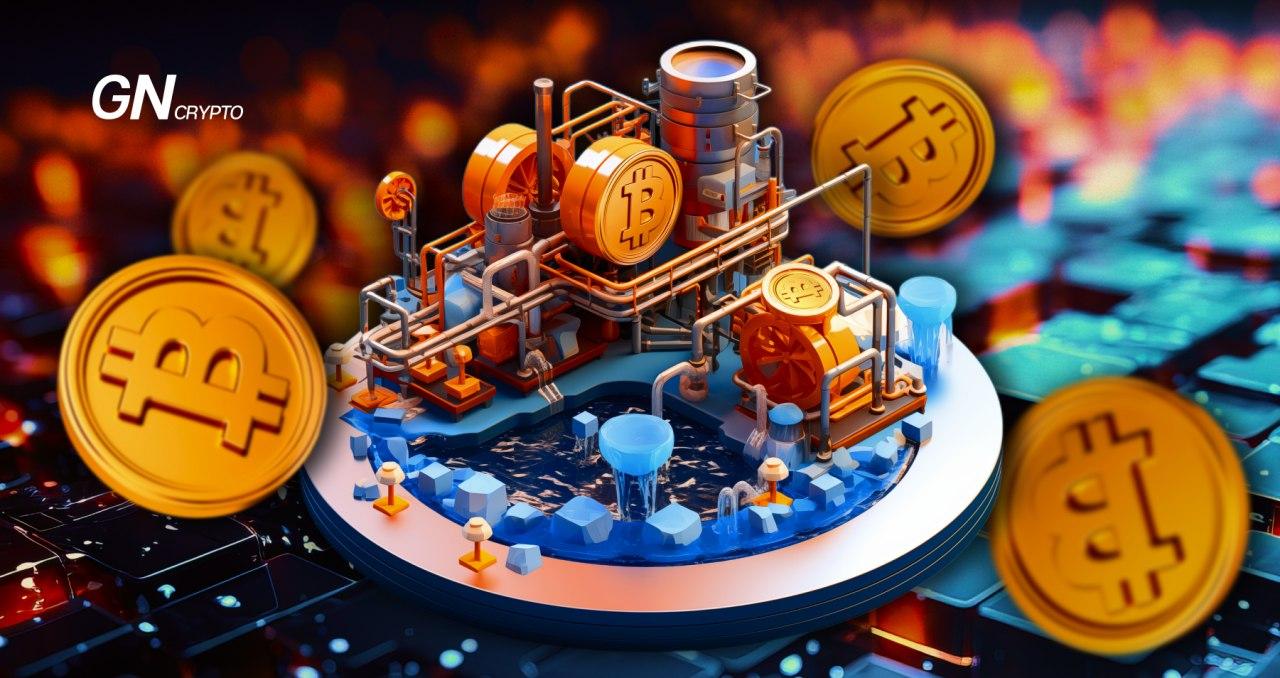Bitcoin Mining: Can We Quench Its Thirst Without Drying Out?

Beyond the steep electricity bills, Bitcoin mining harbors another environmental cost: substantial water consumption. Recent research reveals the significant amount of water resources required for mining bitcoins.
On this page
The “water footprint of Bitcoin,” which denotes the total volume of freshwater used for mining, has seen a considerable rise in recent years. In 2021 alone, it jumped by 66% from the previous year, climbing from 591 to 1574 gigaliters (GL). To put it in perspective, one gigaliter is equivalent to 1 million liters. By the end of 2023, this figure soared to 2237 GL. Intriguingly, processing a single Bitcoin blockchain transaction demands about 16,000 liters of water, which is a staggering 6.2 million times more than a standard credit card transaction!
But how does water play a role in Bitcoin mining? It boils down to two key uses.
First, the direct consumption for cooling systems and air humidification at mining facilities.
Second, the indirect consumption tied to electricity generation needed for mining ASICs.
Alex de Vries, author of the recent study “Bitcoin’s growing water footprint” from the Amsterdam School of Business and Economics (Vrije Universiteit Amsterdam), highlights a striking case from the U.S. involving a mining company accused of environmental crimes. In 2019, Greenidge Generation bought a defunct power plant and repurposed it for Bitcoin mining. Locals soon noted that the mining operations were discharging overly warm water into nearby Seneca Lake, causing it to heat up. In 2023, environmental activists sued Greenidge Generation over this issue, although the lawsuit was ultimately dismissed. Alex de Vries emphasizes that the environmental impact of BTC mining extends beyond excessive electricity use and a substantial carbon footprint contributing to global warming. He points out that the vast amounts of water resources consumed by miners are not infinite. Today, 2-3 billion people globally are experiencing water shortages, and these figures are set to rise.
Mining farms are often located in regions already facing water scarcity. For instance, Alex de Vries notes that in Kazakhstan, the water footprint of BTC mining in 2021 was 998 GL, a 283% increase from the previous year. Astana, the country's capital, is predicted to face a water shortage of 75 GL by 2030.
Without constraints, Bitcoin mining could worsen conflicts over freshwater resources that the region is already experiencing,
Alex de Vries warns.
It is also noted that some U.S. states, which are among the leaders in global BTC mining, confront similar water-related challenges. Therefore, the use of water in cryptocurrency mining demands attention and regulation, similar to energy consumption controls in mining centers. Without such measures, miners could negatively affect the availability and quality of drinking water, agriculture, and the environment as a whole.
Researchers propose several strategies:
- Mining pools should opt for locations with cooler climates to reduce direct water usage.
- Cool mining machines using dielectric fluid, which has insulating properties and is used in high-voltage electrical apparatuses.
- Minimize indirect water consumption by using renewable energy sources like solar, wind, and geothermal power.
- Employ salt water for cooling operations to indirectly cut down on freshwater use.
Finally, Alex de Vries refers to the Crypto Asset Environmental Transparency Act introduced to the Senate in 2023. The bill requires mining companies to report their greenhouse gas emissions from BTC mining. De Vries believes similar reporting should be mandated for miners' water usage. He cites Meta as an example, a company that discloses water usage in its data centers, despite not being involved in Bitcoin mining.
The content on The Coinomist is for informational purposes only and should not be interpreted as financial advice. While we strive to provide accurate and up-to-date information, we do not guarantee the accuracy, completeness, or reliability of any content. Neither we accept liability for any errors or omissions in the information provided or for any financial losses incurred as a result of relying on this information. Actions based on this content are at your own risk. Always do your own research and consult a professional. See our Terms, Privacy Policy, and Disclaimers for more details.

























